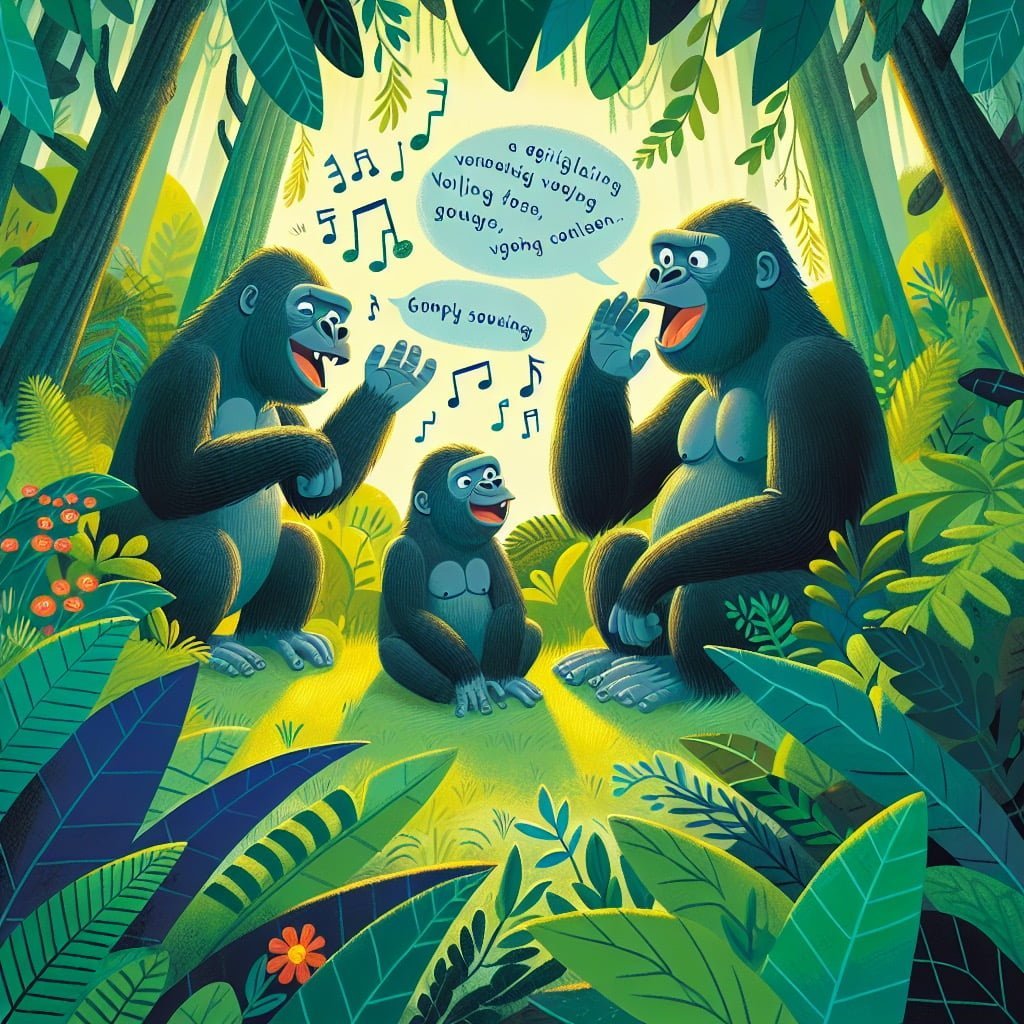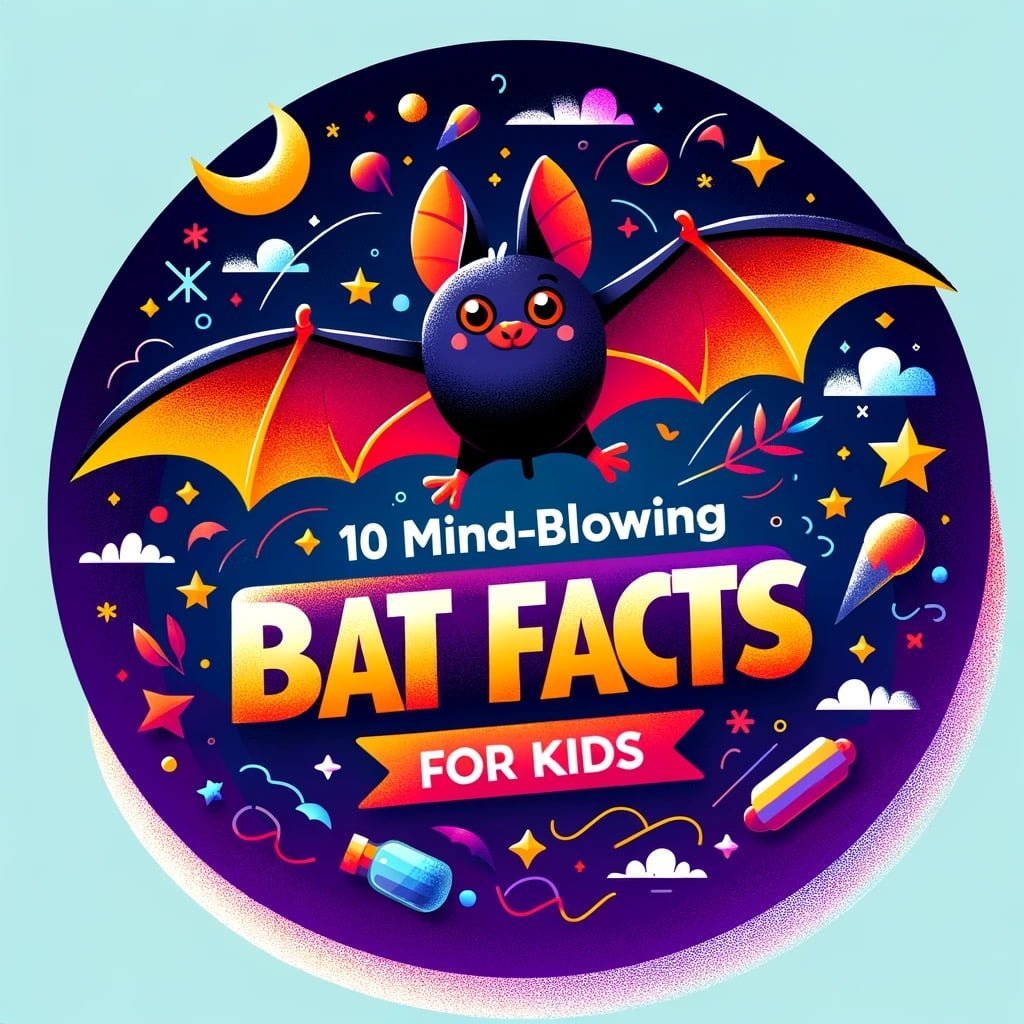Welcome to our fascinating collection of Gorilla Facts For Kids! Whether you are a young explorer looking to learn more about these incredible creatures or a budding scientist interested in the wonders of the animal kingdom, you are in for a treat. From their herbivorous diet to their unique noseprints, strong family bonds, and impressive tool use, gorillas never fail to amaze us with their intelligence and capabilities. Discover how gorillas communicate using sign language, their peaceful nature, and their close genetic connection to humans. Join us on a journey into the world of these majestic creatures and uncover why they are an endangered species in need of our support. Let’s dive into the world of gorillas and expand our knowledge together!
Gorilla Facts For Kids
1. Gorillas Are Herbivores

For younger kids: Gorillas love to munch on yummy fruits, leaves, and veggies!
For older kids: Gorillas are primarily herbivores, with their diet consisting of fruits, leaves, stems, and occasionally insects or small animals.
Detailed explanation:Gorillas, which are the largest primates in the world, are fascinating creatures that captivate the imagination of both children and adults alike. One interesting Gorilla Fact For Kids to know is that gorillas are herbivores, meaning that their diet mainly consists of fruits, leaves, stems, and other plant matter.
Gorillas have a unique digestive system that is specialized for breaking down fibrous plant material. They have large molars for grinding tough vegetation and a long digestive tract that allows them to efficiently extract nutrients from plants. Despite their massive size and strength, gorillas are actually gentle giants when it comes to their feeding habits. They spend a significant portion of their day foraging for food in the dense forests of Central Africa, where they primarily feed on a variety of plant species.
In addition to fruits and leaves, gorillas also occasionally consume insects and small animals, but these make up a very small portion of their overall diet. The bulk of their nutrition comes from the plant-based foods they consume, which provide them with the energy and nutrients they need to thrive in their natural habitat.
Teaching Gorilla Facts For Kids is not only a fun way to educate children about the natural world, but it also helps instill a sense of awe and wonder about these amazing animals. By learning about gorillas and their herbivorous diet, kids can gain a deeper appreciation for the importance of plants in the ecosystem and the diverse ways in which animals have adapted to their environments.
Gorilla Facts For Kids
2. Gorillas Have Unique Noseprints

For younger kids: Each gorilla has a special nose pattern, just like our fingerprints!
For older kids: Just as humans have distinct fingerprints, gorillas have unique nose prints, allowing researchers to track and identify individual gorillas based on their nose patterns.
Detailed explanation:Gorillas, like humans, have unique features that set them apart from one another. One fascinating fact about gorillas is that they have unique noseprints, much like the fingerprints that are unique to each human being. This means that each gorilla has a distinct pattern on their nose that distinguishes them from other gorillas.
Scientists have found that gorilla noseprints are not only unique to each individual gorilla, but they also remain unchanged throughout their lifetime. This makes them a reliable way to identify and track gorillas in the wild, as their noseprints can be used for research, conservation efforts, and monitoring the population.
The unique noseprints of gorillas are formed by ridges and bumps on their noses, which are believed to be influenced by genetics and environmental factors. These ridges and bumps create a pattern that is specific to each gorilla and can be captured and analyzed just like fingerprints.
By studying gorilla noseprints, researchers can gain valuable insights into the behavior, migration patterns, and population dynamics of gorillas in the wild. This information is crucial for conservation efforts and understanding the overall health and well-being of gorilla populations.
In conclusion, gorillas have unique noseprints that serve as a reliable and consistent way to identify them. This fascinating aspect of gorilla biology highlights the importance of studying and protecting these incredible animals in their natural habitats.
Gorilla Facts For Kids
3. Gorillas Are Strong Swimmers

For younger kids: Gorillas are good swimmers and love playing in the water!
For older kids: Despite their large size, gorillas are adept swimmers and are known to swim across rivers and deep water bodies as part of their natural habitat.
Detailed explanation:Gorillas, despite their size and strength, are actually strong swimmers. This may come as a surprise to many people who associate gorillas with land-based activities, such as climbing trees or foraging for food. However, gorillas have been observed swimming both in the wild and in captivity.
One reason gorillas are such adept swimmers is because they have large, powerful bodies that are well-suited for moving through the water. Their long arms and legs help propel them forward, while their muscular build allows them to navigate through the water with ease. In fact, gorillas can swim at speeds of up to 20 feet per second, making them surprisingly fast swimmers.
Gorillas may swim for a variety of reasons, such as crossing bodies of water to reach new feeding grounds or to escape predators. In the wild, gorillas have been seen swimming across rivers and streams in search of food or to get to the other side of their territory. In captivity, gorillas are often provided with pools or water features for enrichment, giving them the opportunity to swim and play in a safe environment.
Overall, the ability of gorillas to swim highlights their adaptability and intelligence as a species. Despite being primarily terrestrial animals, gorillas are more than capable of navigating through water when necessary. This fascinating aspect of gorilla behavior provides valuable insight into their natural history and evolutionary adaptations. So, the next time you think of gorillas, remember that they are not just land-dwellers but also proficient swimmers.
Gorilla Facts For Kids
4. Gorillas Communicate Using Sign Language

For younger kids: Some gorillas can talk to humans using their hands!
For older kids: Certain gorillas, like Koko, have been taught sign language, demonstrating their cognitive abilities and enabling communication with humans through hand gestures.
Detailed explanation:Gorillas are highly intelligent creatures that communicate with each other using a variety of methods, including sign language. This form of communication allows them to express their thoughts, feelings, and needs to others in their group. Gorillas have been studied extensively in captivity to better understand their behavior and cognitive abilities.
One of the most famous examples of gorillas using sign language is Koko, a female gorilla who was taught American Sign Language by researcher Francine Patterson. Koko was able to learn hundreds of signs and communicate with humans in a way that astonished many people. She could ask for food, express her emotions, and even make jokes using sign language.
In the wild, gorillas also use a form of sign language to communicate with each other. They use a combination of vocalizations, body language, and gestures to convey messages within their social groups. For example, when a gorilla wants to show submission to a more dominant member of the group, they may crouch down and avoid eye contact.
By studying how gorillas communicate using sign language, researchers have gained valuable insights into the complex social dynamics of these animals. It has also helped to break down barriers between humans and gorillas, showing that these majestic creatures are more similar to us than we may have realized. Overall, the ability of gorillas to use sign language highlights their intelligence and capacity for complex communication.
Gorilla Facts For Kids
5. Gorillas Have Strong Family Bonds

For younger kids: Gorillas stick together as a big family and care for each other!
For older kids: Gorillas live in close-knit family groups led by a dominant silverback male, with strong social bonds and mutual care and protection among family members.
Detailed explanation:Gorillas, like humans, have incredibly strong family bonds that play a crucial role in their social structure and behavior. These intelligent primates live in close-knit family groups called troops, which usually consist of one dominant silverback male, several females, and their offspring. The silverback is not only the leader of the group but also serves as a protector and provider for the rest of the troop.
Within these family units, gorillas form deep emotional connections with one another through grooming, playing, and communicating. The bonds between family members, especially between mothers and their young, are particularly strong. Mother gorillas are very caring and nurturing towards their babies, carrying them on their backs for the first few years of their lives and teaching them essential skills like foraging for food and building nests.
These family bonds are crucial for the survival and well-being of gorillas. They provide support, protection, and a sense of belonging for each member of the troop. Additionally, these strong relationships help gorillas navigate their complex social hierarchies and maintain peace within the group. When a new gorilla joins a troop, they must earn the trust and acceptance of the other members, which can take time but is essential for their integration into the family unit.
In conclusion, the strong family bonds that gorillas have are a fascinating aspect of their behavior and biology. Studying these relationships can provide valuable insights into the social dynamics of these incredible animals and help us better understand and appreciate their complex lives in the wild.
Gorilla Facts For Kids
6. Gorillas Use Tools in the Wild

For younger kids: Gorillas are very smart and can use branches and rocks to help them find food!
For older kids: Studies have shown that gorillas exhibit tool use in the wild, using sticks to measure water depth or rocks to crack open nuts for consumption.
Detailed explanation:Gorilla Facts For Kids
One of the fascinating aspects of gorilla behavior is their ability to use tools in the wild. This behavior can be observed in both wild and captive gorillas, making it a significant aspect of their natural behavior. Gorillas have been observed using various objects as tools for different purposes, such as foraging for food, communication, and even play.
In the wild, gorillas have been observed using sticks to measure water depth in swamps before crossing, as well as using branches and logs to build makeshift bridges to help them navigate difficult terrain. This demonstrates their problem-solving skills and ability to adapt to their environment using tools.
Interestingly, tool use in gorillas can also be a form of social learning, where younger individuals observe and learn from older, more experienced individuals. This form of learning helps to pass on important survival skills and knowledge from one generation to the next.
In captivity, gorillas have been observed using tools in creative ways, such as using sticks to reach food placed out of reach or using rocks to crack open nuts. These behaviors not only showcase their intelligence but also highlight their ability to problem-solve in various situations.
Overall, the fact that gorillas use tools in the wild is a testament to their intelligence and adaptability. By observing and studying these behaviors, researchers can gain valuable insights into the cognitive abilities of these fascinating creatures.
Gorilla Facts For Kids
7. Gorillas Are Peaceful Creatures

For younger kids: Gorillas are gentle and prefer to avoid conflict!
For older kids: Despite their powerful presence, gorillas are generally peaceful animals, relying on displays of dominance rather than physical aggression to resolve conflicts within their groups.
Detailed explanation:Gorillas are often portrayed as fierce and aggressive animals in popular media, but in reality, they are peaceful creatures. Despite their massive size and intimidating appearance, gorillas are actually gentle and non-violent animals, especially towards humans. It is important for kids to understand this fact about gorillas, as it helps dispel any misconceptions they may have about these fascinating creatures.
One of the main reasons why gorillas are peaceful creatures is because they live in close-knit family groups known as troops or bands. These groups are led by a dominant male, known as a silverback, who is responsible for protecting and guiding the rest of the family. The other members of the troop, including females and younger gorillas, look to the silverback for leadership and guidance, creating a sense of unity and harmony within the group.
Additionally, gorillas are primarily herbivores, meaning that they primarily eat plants and fruits. Their diet consists of leaves, stems, fruits, and occasionally insects. This gentle diet reflects their peaceful nature, as they do not need to hunt or kill other animals for food. Instead, they spend most of their time foraging for vegetation in the forests where they live.
Overall, gorillas are peaceful creatures who prefer to avoid conflict and live harmoniously with one another. By understanding this important Gorilla Facts For Kids, children can develop a greater appreciation for these incredible animals and the importance of conservation efforts to protect them in the wild.
Gorilla Facts For Kids
8. Gorillas Have Unique Vocalizations

For younger kids: Gorillas make different sounds to talk to their friends and family!
For older kids: Gorillas have a diverse range of vocalizations that help them communicate within their groups, including hoots, grunts, roars, and chest beats to convey various messages and emotions.
Detailed explanation:Gorillas, like many other primates, use vocalizations as a form of communication within their social groups. What sets gorillas apart is the unique nature of their vocalizations. Each gorilla has its own distinct vocal fingerprint, with individual calls and sounds that are specific to them. These vocalizations serve a variety of purposes, from expressing emotions such as happiness, fear, or anger, to establishing territories and communicating with other group members.
One of the most well-known vocalizations of gorillas is the iconic chest-beating display, often accompanied by powerful roars. This display is usually performed by adult males to assert dominance and intimidate rivals. However, gorillas also use a wide range of other vocalizations, including grunts, hoots, barks, and even purrs. These sounds help gorillas coordinate their activities, warn each other of potential dangers, and maintain social bonds within the group.
In addition to their vocalizations, gorillas also communicate through body language, facial expressions, and gestures. By combining vocalizations with these other forms of communication, gorillas are able to convey complex messages to one another. Researchers have spent years studying gorilla vocalizations in order to better understand their behavior and social dynamics.
Overall, the unique vocalizations of gorillas play a crucial role in their everyday lives. They allow these magnificent creatures to communicate effectively with one another, navigate their environment, and maintain social cohesion within their groups. Studying gorilla vocalizations is essential for gaining insights into their behavior and biology, and appreciating the fascinating complexity of these animals.
In conclusion, Gorilla Facts For Kids highlight the remarkable vocal abilities of these incredible primates, showcasing just how fascinating and intelligent they truly are.
Gorilla Facts For Kids
9. Gorillas Share 98% DNA with Humans

For younger kids: Gorillas are our distant cousins and look a bit like humans!
For older kids: Humans share about 98% of their DNA with gorillas, making them one of our closest living relatives in the animal kingdom.
Detailed explanation:Gorillas are fascinating creatures that share a strikingly high percentage of DNA with humans. In fact, gorillas share about 98% of their DNA with humans, making them one of our closest living relatives in the animal kingdom. This close genetic relationship is a result of our shared evolutionary history, as both humans and gorillas are primates.
It is important to note that while gorillas and humans share a significant amount of DNA, there are still many differences between the two species. Gorillas, for example, have much more body hair and a very different skeletal structure compared to humans. They also have different social structures and communication methods.
Despite these differences, studying the genetic similarities between humans and gorillas can provide valuable insights into human evolution and biology. By comparing our DNA with that of gorillas, scientists can gain a better understanding of how certain genetic traits have evolved over time and how they are related to specific physiological characteristics.
For kids who are interested in learning more about gorillas, understanding this genetic connection can make these magnificent animals even more captivating. It can help them appreciate the complexity and beauty of the natural world, and inspire them to learn more about other fascinating creatures that share our planet.
In conclusion, the fact that gorillas share 98% of their DNA with humans is a testament to the incredible diversity and interconnectedness of life on Earth. Studying this genetic relationship can deepen our appreciation for these incredible animals and shed light on our own evolutionary journey. So, next time you see a gorilla at the zoo or in the wild, remember that they are not so different from us after all.
Gorilla Facts For Kids
10. Gorillas Are Endangered Species

For younger kids: Gorillas need our help to stay safe and protect their homes!
For older kids: Due to habitat destruction, poaching, and diseases, gorillas are critically endangered species, requiring conservation efforts to ensure their survival in the wild.
Detailed explanation:Gorillas are fascinating creatures that have captured the hearts and minds of people all around the world. These magnificent animals are unfortunately classified as an endangered species, facing various threats to their survival in the wild.
There are several reasons why gorillas are considered endangered. One of the main factors is habitat loss due to deforestation, human encroachment, and agricultural expansion. As their natural habitats shrink, gorillas are forced into smaller areas where food may be scarce, leading to increased competition and conflict with humans.
Another significant threat to gorilla populations is poaching. Gorillas are often targeted by illegal hunters for their meat, which is considered a delicacy in some parts of the world. The demand for gorilla body parts in traditional medicine practices also contributes to their decline in numbers.
Climate change is another key issue affecting gorillas. As temperatures rise and weather patterns become more unpredictable, gorillas are facing challenges in finding suitable food sources and adapting to changing environmental conditions.
Conservation efforts are crucial in protecting gorillas and ensuring their survival for future generations. Organizations dedicated to gorilla conservation work tirelessly to establish protected areas, conduct research, and educate local communities about the importance of preserving these incredible animals.
In conclusion, it is essential for us to raise awareness about the plight of gorillas and take action to protect them from the various threats they face. By learning more about these gentle giants and supporting conservation initiatives, we can help ensure a brighter future for gorillas and the ecosystems they inhabit. Remember, gorilla facts for kids are not just interesting trivia – they are a call to action to safeguard the future of these amazing creatures.
Did you know?
Did you know that a group of gorillas is called a “troop”?
Summary of Gorilla Facts For Kids
Are you curious about the fascinating world of gorillas? In this engaging blog post, you will discover 10 intriguing facts about these gentle giants that will captivate kids of all ages. From their herbivorous diet to their unique noseprints, strong family bonds, and impressive communication skills using sign language, gorillas are truly remarkable creatures. Did you know that gorillas are strong swimmers and even use tools in the wild? With their peaceful nature and close genetic relationship to humans, gorillas are not only captivating but also in need of our help as an endangered species. Delve deeper into the world of gorillas and their conservation efforts to learn more about these incredible creatures. Join us on this educational journey to explore Gorilla Facts For Kids and be inspired by the wonders of the animal kingdom!
Sources and additional information for Gorilla Facts For Kids
WikipediaBritannicaSan Diego Zoo KidsThe Smithsonian InstitutionDK Find Out!Australian MuseumWorld Wildlife FundThe Nature ConservancyAnimal PlanetMonterey Bay AquariumPBS NatureSmithsonian’s National Zoo & Conservation Biology InstituteWorld Wildlife FundAnimal Diversity Web (University of Michigan)IUCN Red List of Threatened SpeciesThe Cornell Lab of Ornithology – All About BirdsNational Audubon SocietyEncyclopedia of LifeSeaWorld Parks & EntertainmentAustralian Museum – AnimalsEncyclopedia of Life




